
VITÓRIO PAULO :: ARQUITETO
Arquitetura
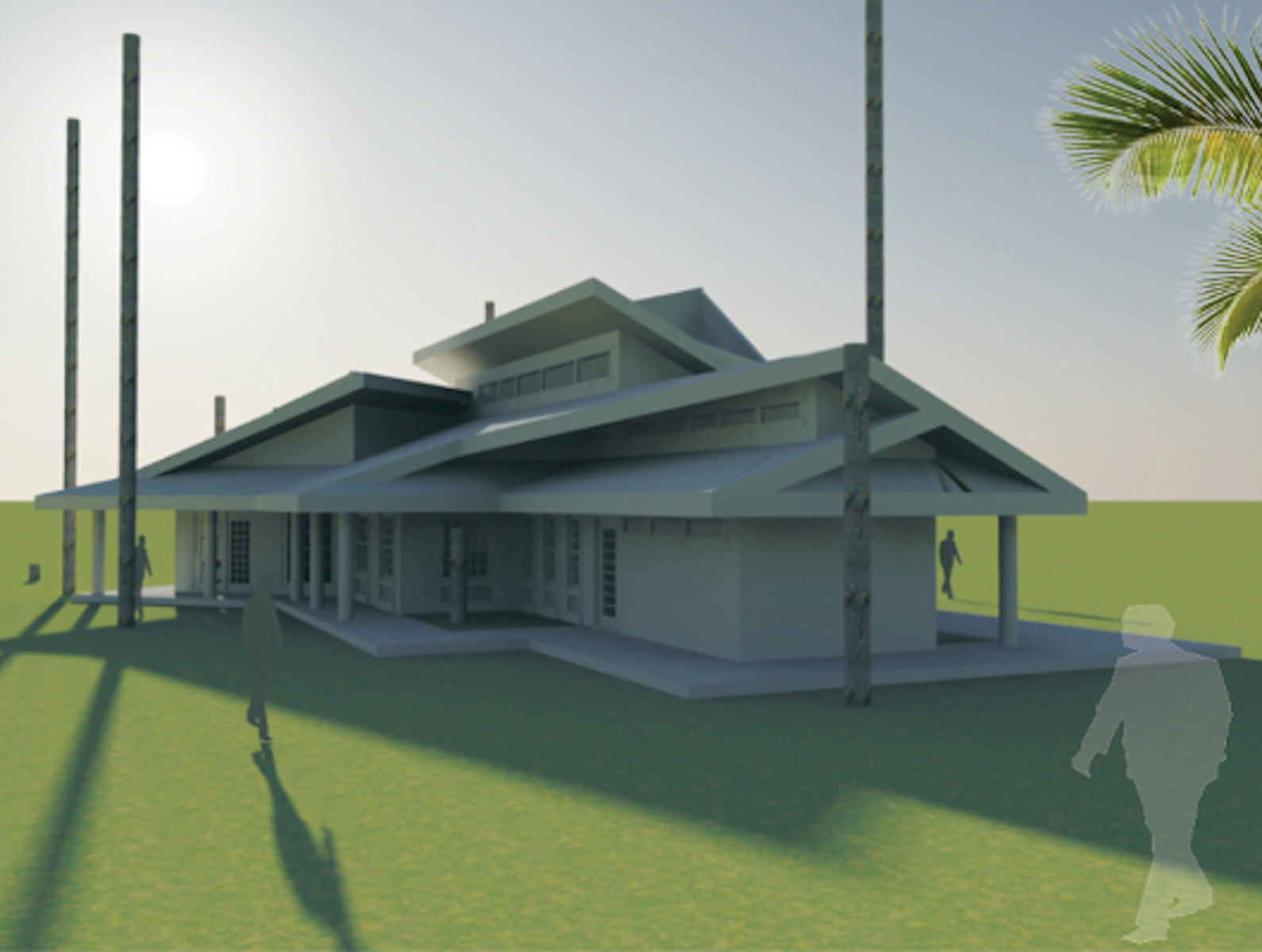
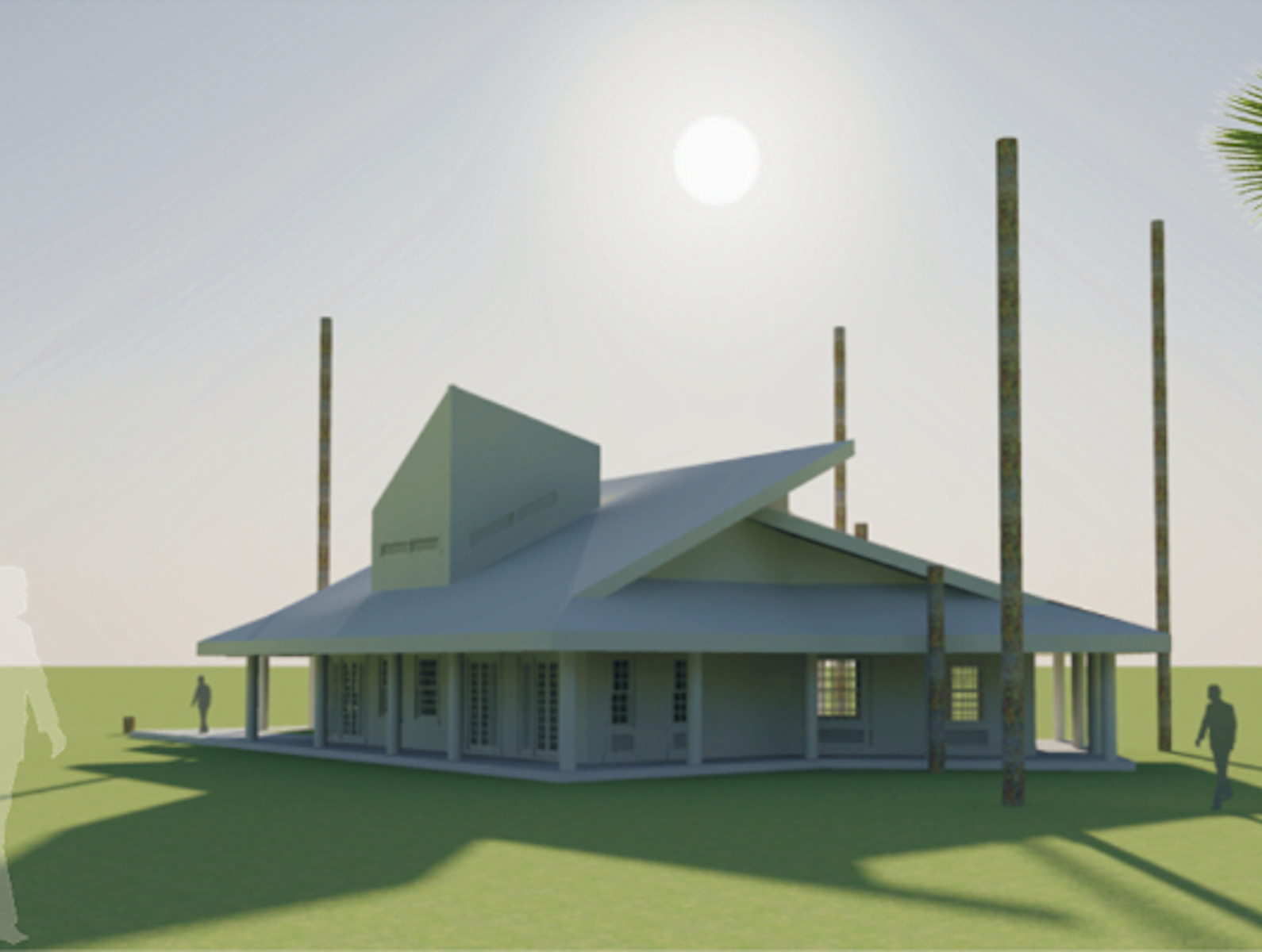
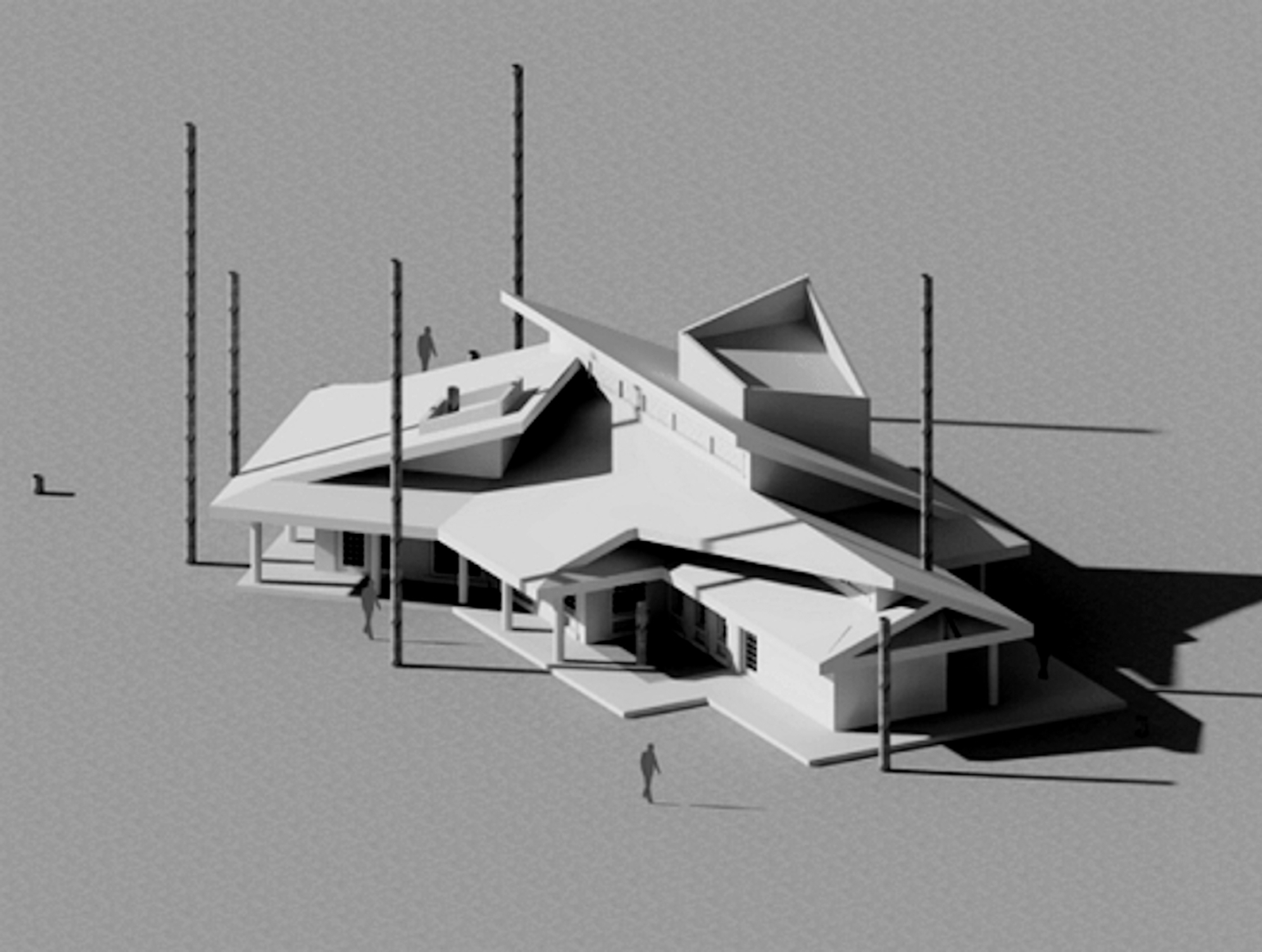
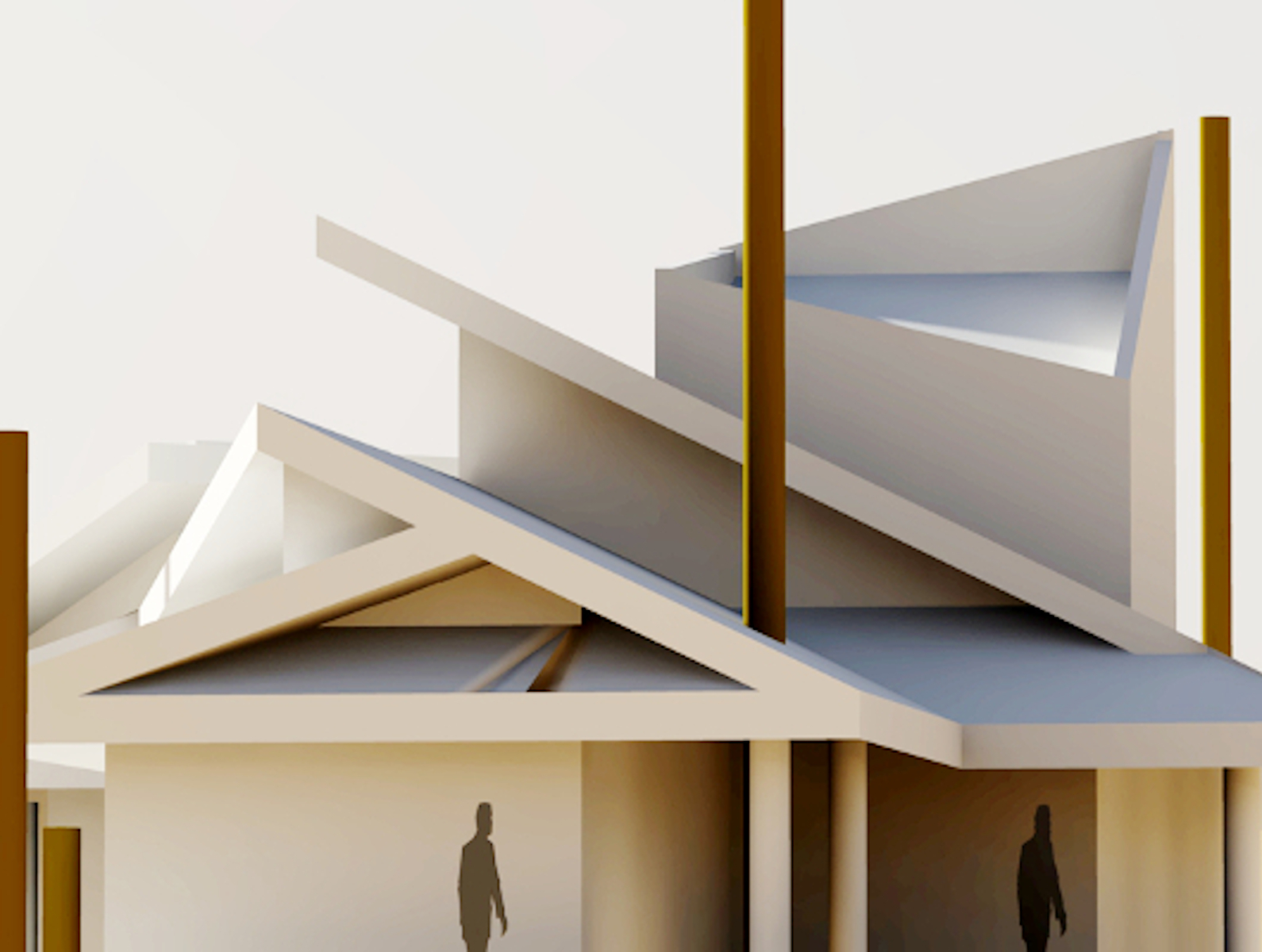
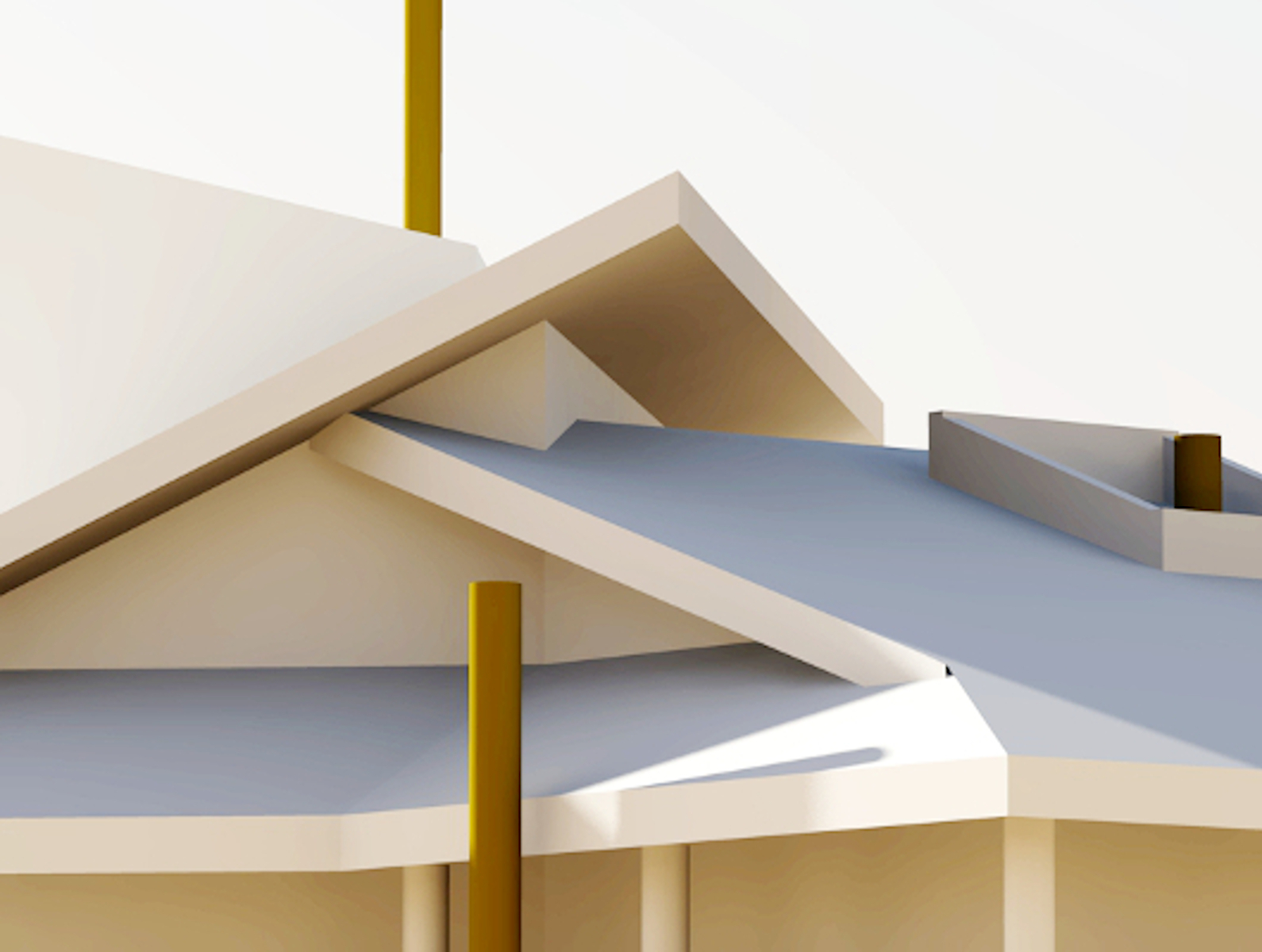
Design de Móveis
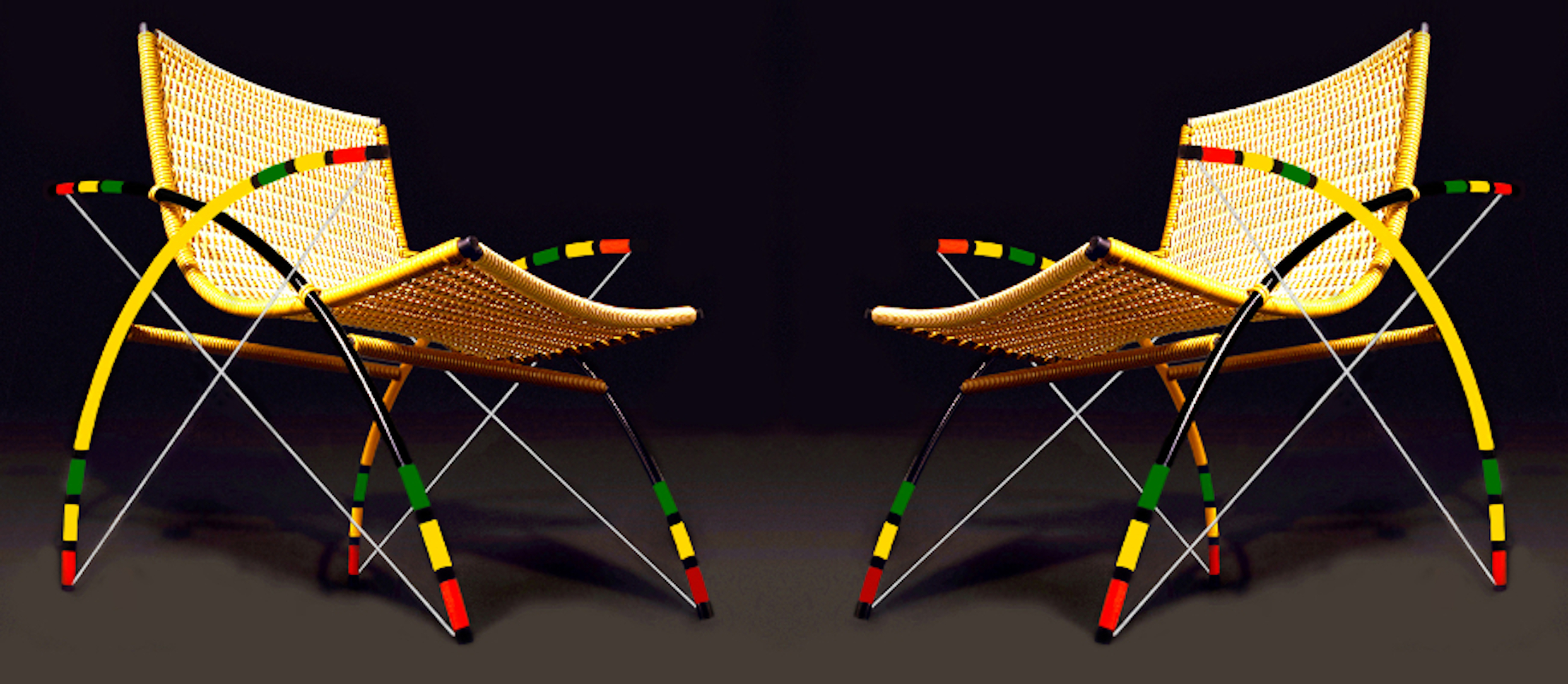
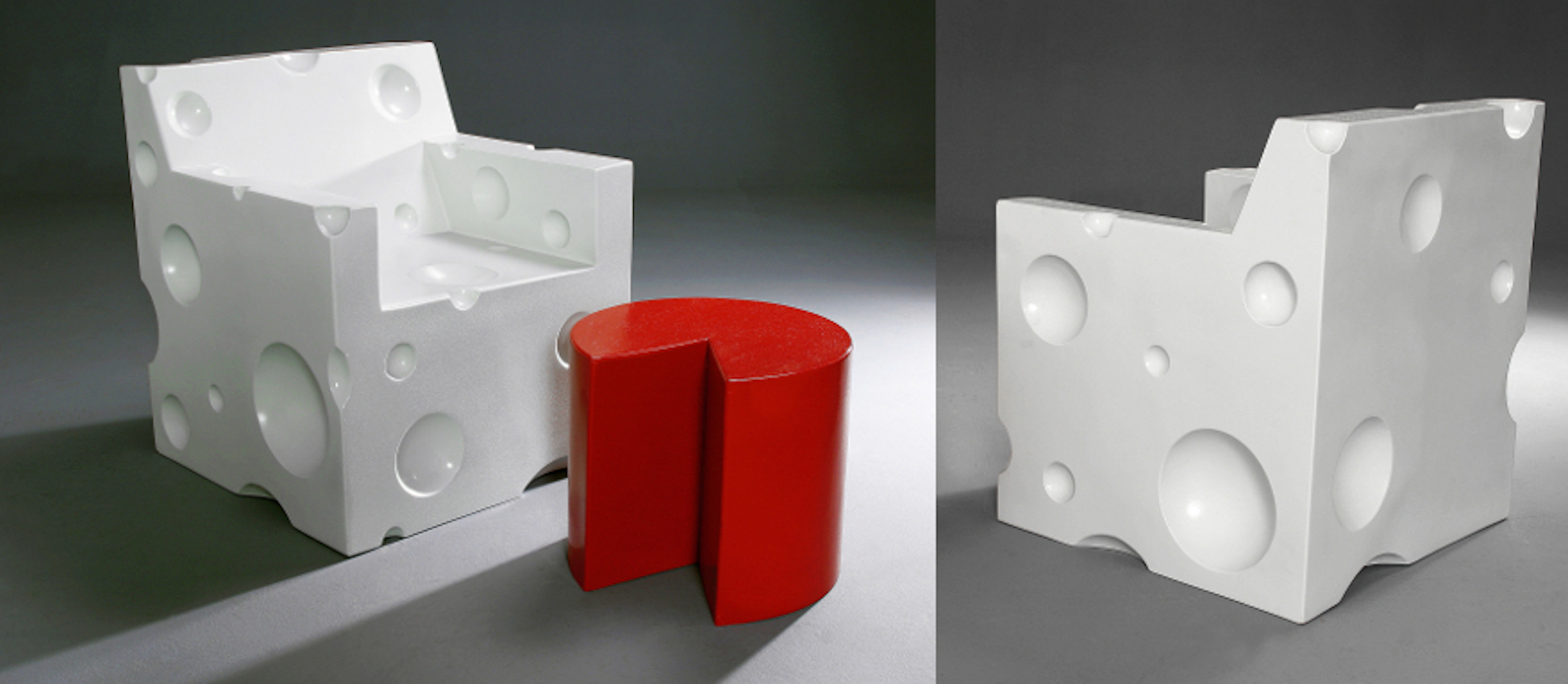
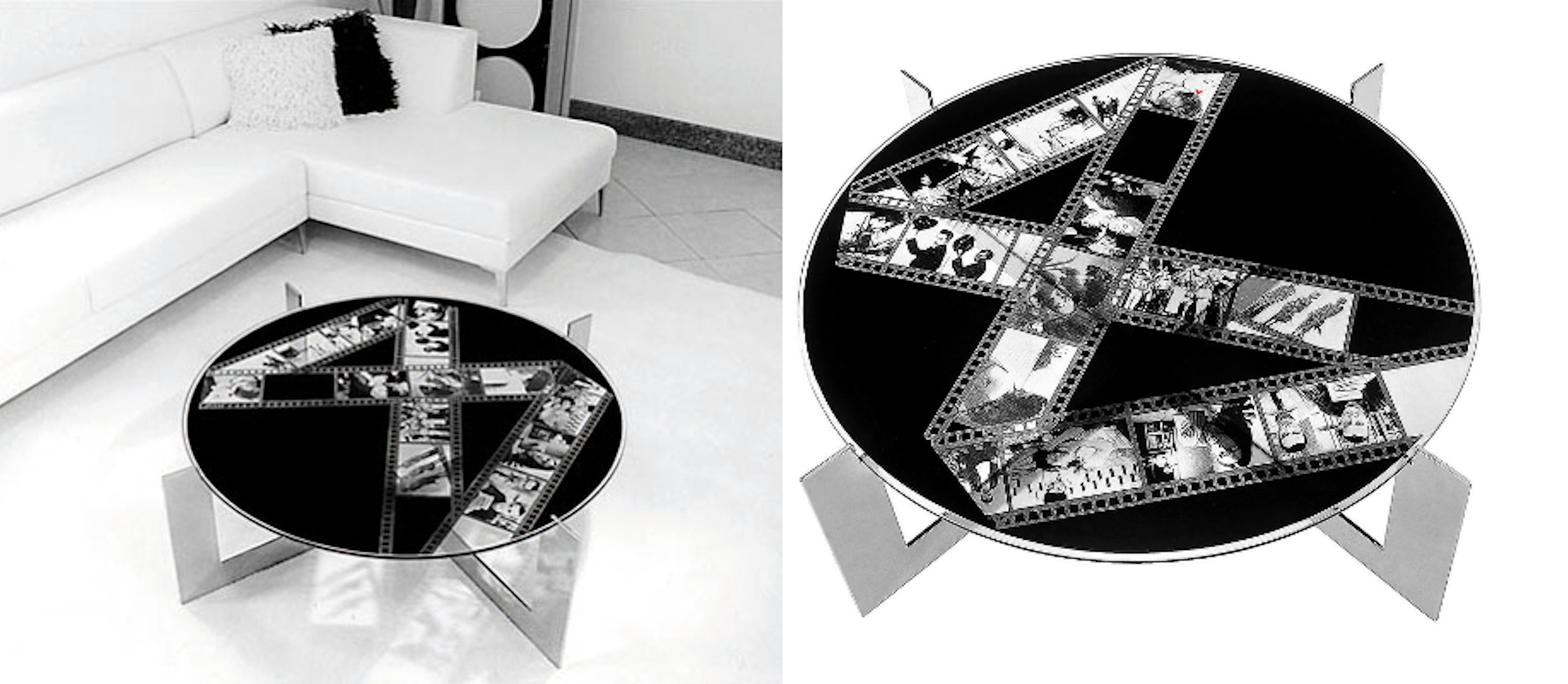
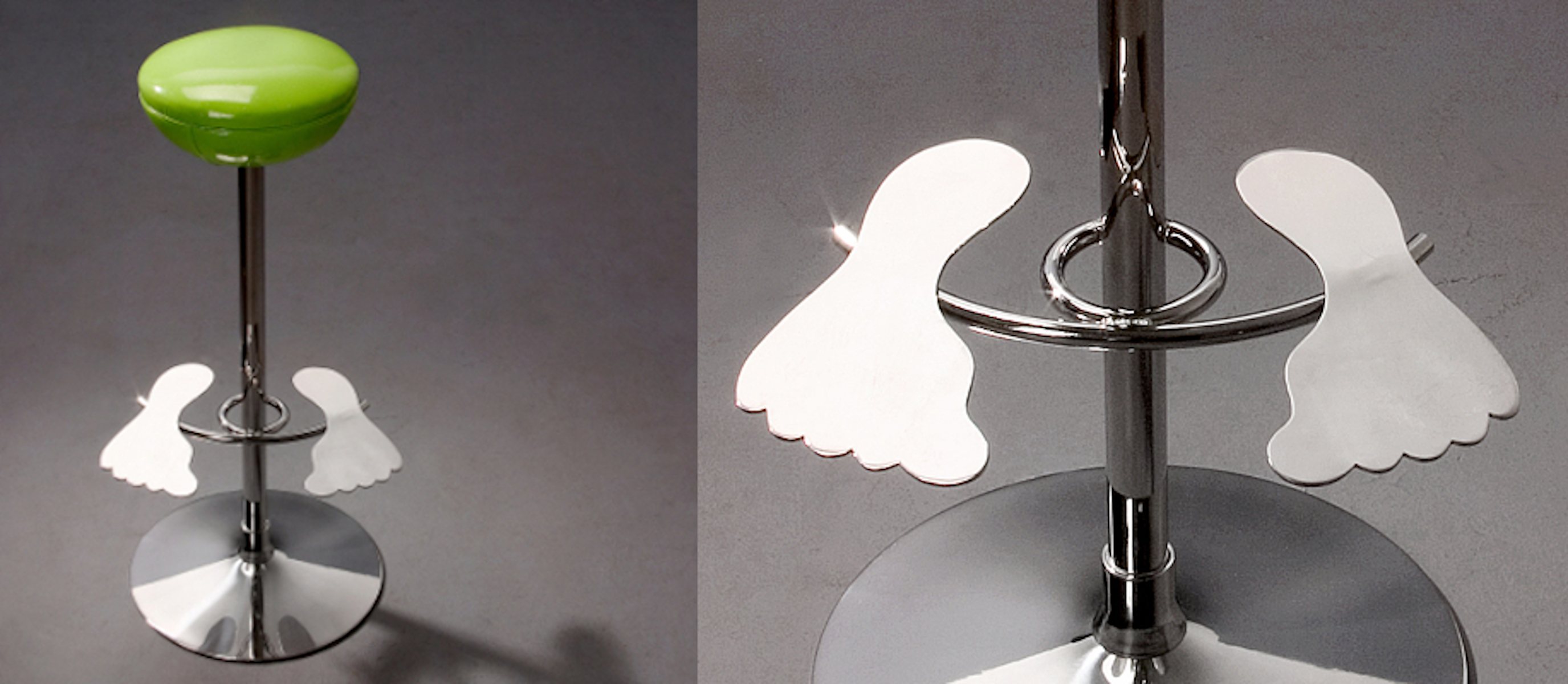
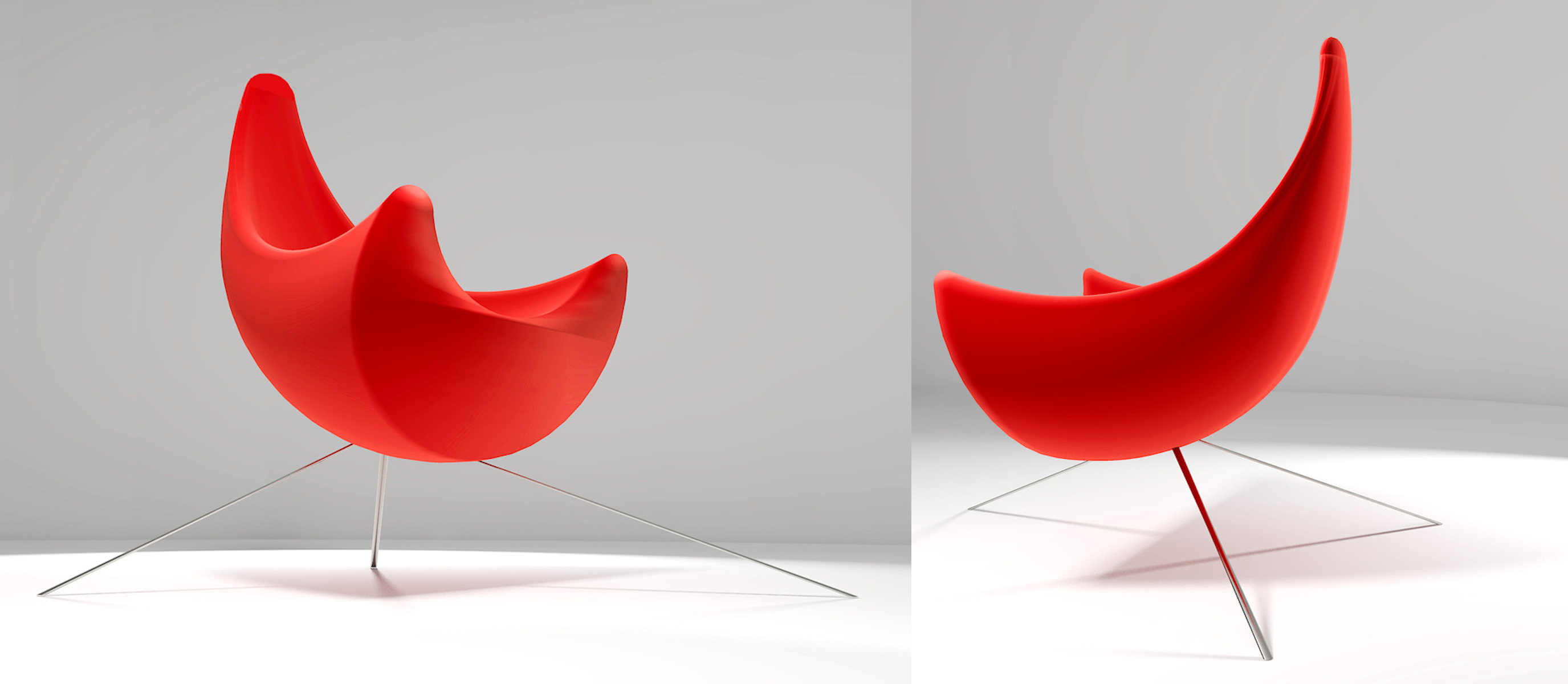
Prática
Missão
Uma compreensiva prática integrada de Arquitetura, Design e tecnologia focada no desenvolvimento de produtos que, além dos princípios básicos de viabilidade, estética, funcionalidade, sustentabilidade/eco-eficiência, trazem felicidade, bem estar, satisfação, encantamento e prazer ao usuário final.
Assim, produtos que promovendo inovação e em ruptura com o status-quo, são uma mensagem de esperança para a humanidade vindo de outro planeta.
Visão
Pensando grande e trabalhando com eficiência, seriedade, profissionalismo e criteriosa atenção às demandas e budget da patronagem, se tornar uma líder global na indústria da Arquitetura, Design e Tecnologia.
Valores
Iconoclastia | Irreverência | Originalidade | Criatividade | Inovação | Ousadia | Vanguarda.
About
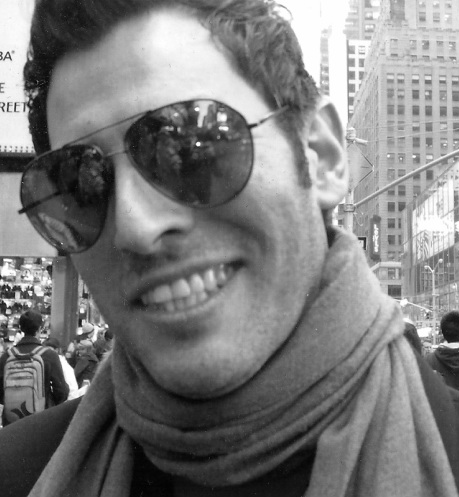
Formação Acadêmica
Arquiteto & Urbanista :: FAU-UFBA.
Salvador - Bahia | Brasil. 2003.
Mestre - Arquitetura & Urbanismo :: PPGAU-UFF.
Niterói - Rio de Janeiro | Brasil. 2008
Especialista - Engenharia de Software :: GENERAL ASSEMBLY.
Boston - MA | USA. 2017
Prêmios
4° Prêmio Liceu de Design
Finalista, Cadeira Queijo Minas. Salvador - Bahia | Brasil. 2002.
1° Prêmio Novos Talentos do Design Movelpar
2° Prêmio, Cadeira Queijo Minas. Arapongas - Paraná | Brasil. 2004.
5° Prêmio Liceu de Design
Finalista, Banqueta Los Pies. Salvador - Bahia | Brasil. 2005.
2° Prêmio Design Movelpar
Finalista, Chaise Berimbau. Arapongas - Paraná | Brasil. 2005.
Títulos
Arquiteto & Urbanista
Faculdade de Arquitetura & Urbanismo :: FAU-UFBA. Salvador - Bahia | Brasil. 2003.
Mestre Stricto-Sensu em Arquitetura & Urbanismo
Programa de Pós-graduaçao em Arquitetura & Urbanismo :: PPGAU-UFF. Niterói - RJ | Brasil. 2008.
Especialista em Software Engineering
General Assembly. Boston - MA | USA. 2017.
Consultor & Instrutor Pleno em Design | SEBRAE
SEBRAE - Serviço Brasileiro de Apoio às Pequenas e Micro Empresas. Goiânia - Goiás | Brasil. 2005.
Membro Honoris Causa | Clube do Designer
CEM - Central da Excelência Moveleira | Grupo Móveis de Valor. Arapongas - Paraná | Brasil. 2004.
Professor Convidado - Bacharelado em Design | UFG
Universidade Federal de Goiás | Faculdade de Artes Visuais. Goiânia - Goiás | Brasil. 2004.
Professor Convidado - Bacharelado em Design | UCG
Universidade Católica de Goiás. Goiânia - Goiás | Brasil. 2003.
Exibições
Bahia Che Cos`a.
Milano - Italy. 2006. Cadeira Queijo Minas.
Proyecto de Innovación de la Industria Mueblera Latin America. 1°Ed.
Las Missiones - Argentina. 2007. Coleção Romeu & Julieta.
5° Prêmio Liceu de Design
Salvador - Bahia | Brasil. 2005. Banqueta Los Pies.
2° Prêmio Design Movelpar
Chaise Berimbau. Arapongas - Paraná | Brasil. 2005.
Casa Cor Brasília
Brasília - DF | Brasil. 2004. Sala de Jantar - Arq. Márcio Corrêia. Participação com a Cadeira Queijo Minas.
Projeto de Inovação da Indústria Moveleira 1° Ed. FIQ.
Arapongas - Paraná | Brasil. 2005. Coleção Romeu & Julieta.
1° Prêmio Novos Talentos do Design Movelpar
Arapongas - Paraná | Brasil. 2004. Cadeira Queijo Minas.
Goiás é Bom Demais! Design Expo
Goiânia - Goiás | Brasil. 2003. Coleção Romeu & Julieta.
2° Salão Goiano do Design do Móvel
Goiânia - Goiás | Brasil. 2003. Mesa Película.
Arte & Design Expo. Loja Casa Mix.
Goiânia - Goiás | Brasil. 2003. Mix de Produtos.
4° Prêmio Liceu de Design
Salvador - Bahia | Brasil. 2002. Cadeira Queijo Minas.
Bienal José Miguel Aroztegui - ENCAC | COTEDI Expo
"Baía de Todos os Santos Center Mall -
Uma Aplicação dos Princípios Bioclimáticos da Arquitetura."
Curitiba - Paraná | Brasil. 2003. VII ENCAC | III ELACAC.
Testimonials
" Irreverência da melhor qualidade! "
Alex Collontonio. CASA VOGUE.
" Design inovador! De intenso apelo pop e lúdico conforme pretendia o autor! "
Chico Mazzoni. Arquiteto | Designer | Artista-plástico | Educador.
" Em um universo em expansão como o do Design brasileiro, além da constelação de nomes consagrados há espaço também para os jovens talentos: Vitório Paulo é um deles. "
Joana Dale. JORNAL do BRASIL.
" A ludicidade é o elemento de destaque que reflete uma bem humorada abordagem construtiva. "
Enéas Guerra. Designer | Presidente da ABDesign.
" O Design de Vitório Paulo é sensorial: da vontade de sentir, de pegar mesmo! "
Karin Nagae. OPEN JORNAL.
Serviços
Arquitetura
Urbanismo
Interiores
Space Planning
Acompanhamento de obras
Design de Móveis
Design de Produtos
Consultorias
Desenvolvimento Web
UX | UI Design
Information Architecture
Entre outros
Publicações
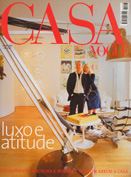
Mickey Mouse
" Pura descontração, a Cadeira Queijo Minas foi uma das vedetes da quarta edição do Prêmio Liceu de Design, evento que a cada temporada traz à tona nova leva de talentos promissores à bordo de pranchetas inventivas.
O autor da apetitosa criação é o designer Vitório Paulo, que esculpiu a peça artesanalmente num bloco de fibra de vidro. Irreverência da melhor qualidade."
Por: Allex Collontonio.
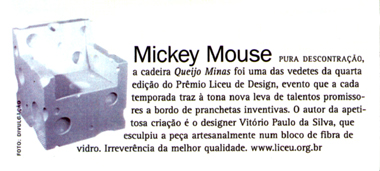
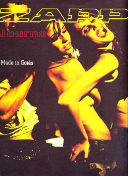
Design
" Aconteceu no Museu de Arte Contemporânea de Goiás o II Salão Goiano do Design do Móvel que, apesar do nome, também abriga luminárias, objetos utilitários além de soluções para o cotidiano do homem urbano.
A mostra promovida pela ABD-GO, com organização e produção de Beatriz Junqueira e Gilmar Camilo, foi preparada para mostrar a qualidade e excelência dos móveis e produtos de design produzidos em Goiás.
Trinta e três profissionais exibem sua criatividade em projetos experimentais e também com produtos que já estão sendo industrializados. A exposição foi realizada em parceria do Sindimóveis, Sebrae, Secretaria Municipal de Cultura, Senai e Agepel."
Por: Marco Aurélio.

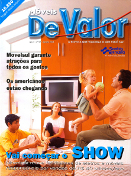
Talentos: Design na Movelpar
" Entre tantos eventos, a Movelpar 2004 irá sediar a exibição do 1° Prêmio Novos Talentos do Design seguindo com a apresentação dos respectivos vencedores. Irreverência e ousadia são o forte de muitas propostas. Este é o caso da Cadeira Queijo Minas, design de Vitório Paulo.
Produzida em Fibra de vidro e resina de polyester, a peça resulta em uma única superfície de apenas 3 (três) mm (milímetros) de espessura: 'a cadeira é leve, altamente resistente e durável, confortável e divertida, diz Vitório Paulo'."
Por: Inalva Corsi.
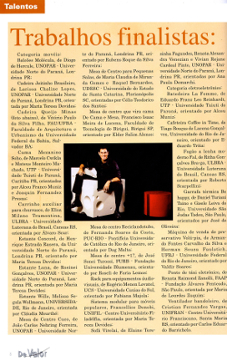
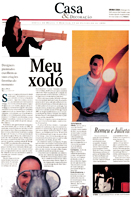
Romeu & Julieta
" Em um universo em expansão como o do design brasileiro, além da constelação de nomes consagrados, há espaço também para jovens talentos. O arquiteto Vitório Paulo é um deles. Mal começou e já levou um prêmio na Movelpar, a feira de móveis do Paraná.
A peça em fibra de vidro e resina poliéster, intitulada Queijo Minas, lembra mais um queijo suíco, só que branquinho.
'Depois que criei a cadeira, senti que faltava algo. E, como diria Tom Jobim - é impossível ser feliz sozinho. Para acompanhar, resolvi fazer o pufe goiabada. E aí está o par Romeu & Julieta, a sobremesa que virou móvel', diverte-se Vitório.
Como a primeira criação a gente não esquece, a dupla é o xodó da hora de Vitório Paulo."
Por: Joana Dale.
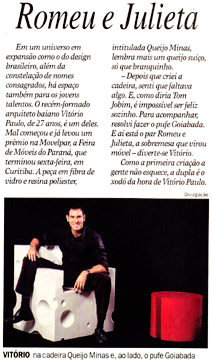
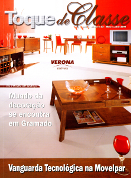
Concurso estimula o Design
" Para impulsionar a utilização do design na indústria de móveis e eletrônicos a Movelpar, evento realizado no início de fevereiro em Arapongas - Paraná, criou o concurso Novos Talentos.
A cadeira Queijo Minas, design de Vitório Paulo, foi uma das vencedoras. O autor começou a partir de uma criativa, original e ousada proposta conceitual que também dedicou atenção aos aspectos ergonômicos. A peça foi fabricada em fibra de vidro e resina polyester."
Por: Inalva Corsi.
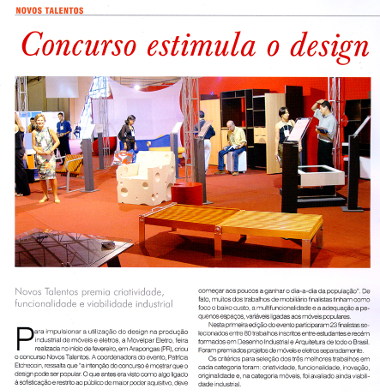
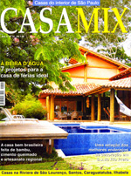
Quem sentou no meu queijo?
" Alguêm já pensou em sentar-se sobre um queijo gigante? E sobre uma goiabada? Para os que respondem sim, a oportunidade é esta!
Criada pelo arquiteto Vitório Paulo, a cadeira Queijo Minas, e o pufe Goiabada apresentam aspectos sintático-visuais que brincam com o imaginário do observador-usuário, estimulando os sentidos de visão, olfato, tato e paladar.
Os móveis foram produzidos em fibra de vidro e resina polyester e foram apresentados na primeira edição da Movelpar - feira de móveis do Paraná."
Por: Tatiane Domiciano.
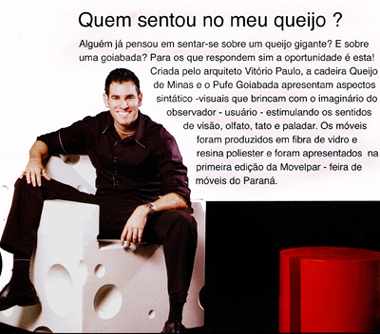
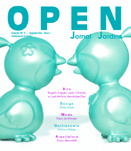
Modernidade e Brasilidade compõem o trabalho de Vitório Paulo
" Cada vez mais brasileiros alcançam o mundo com seus trabalhos contemporâneos, adequando aspectos brasileiros em suas peças. Este é o caso de Vitório Paulo.
Seu trabalho é sensorial, dá vontade de sentir, de pegar mesmo, caso do pufe Goiabada que, associada à cadeira Queijo Minas, formam a coleção Romeu & Julieta."
Por: Karen Nagae.
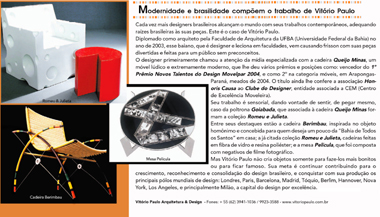
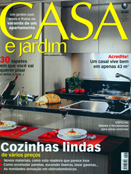
Cobiça
" Romeu & Julieta. A combinação queijo-com-goiabada cai bem não só na culinária como também no design.
A dupla, transformada há dois anos em poltrona Queijo e pufe Goiabada pelo arquiteto baiano Vitório Paulo, deu tão certo que ele acaba de lançar a versão infantil (foto) de tamanho menores. O conjunto é feito de fibra de vidro e resina poliéster com pintura texturizada."
Por: Simone Quintas.
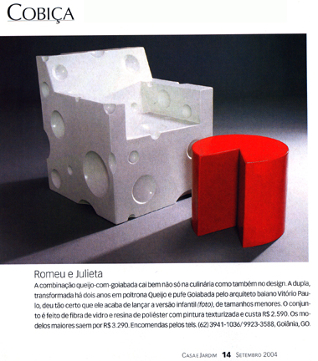
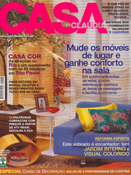
Delícia de Cadeira
" Depois do pufe Goiabada, o arquiteto Vitório Paulo resolveu criar a cadeira Queijo Minas. De fibra de vidro e resina poliéster, a peça conquistou o Prêmio Novos Talentos do Design 2004, promovido pela feira de Móveis do Paraná."
Por: Maria Helena Pugliesi.
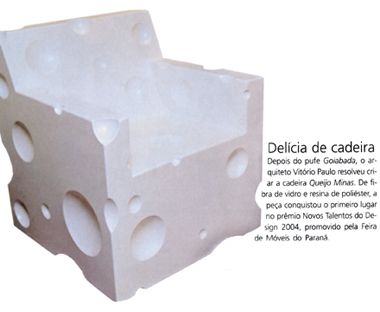
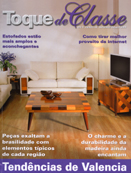
A Força e a Beleza do Design Brasileiro
" Valorizar nossas raízes, diversidade e cultura. Enfatizar tudo de bom que nosso país tem a oferecer. Esta é a proposta de muitos designers que resolveram mostrar ao mundo um pedacinho do Brasil em cada peça produzida.
Exemplo de ousadia e originalidade é o designer baiano Vitório Paulo, finalista da 5° versão do Prêmio Liceu de Design, com a banqueta Los Pies
- 'é uma peça com estilo, criada para arrancar sorrisos, para expressar o bom humor, alto astral e jeito maroto de ser da nossa gente brasileira' - explica o profissional."
Por: Tatiana Stock.
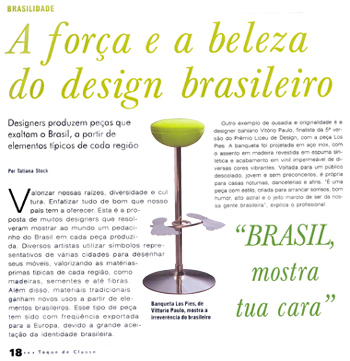
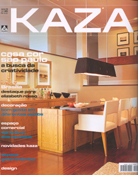
Identidade Brasileira
" Humor é a marca do trabalho de Vitório Paulo, arquiteto e designer baiano que apesar de jovem já acumula prêmios em sua trajetória.
Entre algumas de suas criações, quase temáticas, está a chaise Berimbau, concebida a partir de elementos da cultura afro-brasileira, feita em fibra sintética, trançada sobre estrutura tubular única."
Por: Cristina Teixeira.
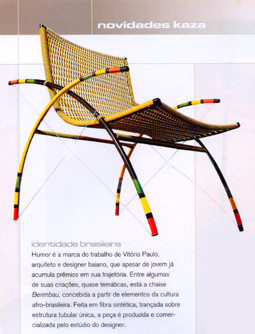
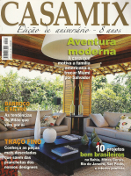
Prata da Casa: Criatividade e Ousadia Marcam as peças com design "Made in Brazil"
" Sugestivamente entitulada Los Pies, a banqueta do Arquiteto e Designer Vitório Paulo tem uma pegada de diversão e bom humor. A peça tem sua estrutura feita em aço inox e o assento disponível em diversas opções de vinil colorido impermeável."
Por: Tatiane Domiciano.
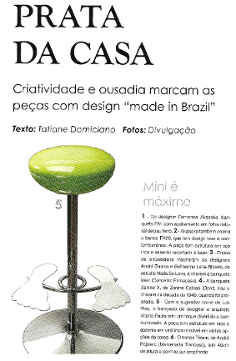
Design de Produtos
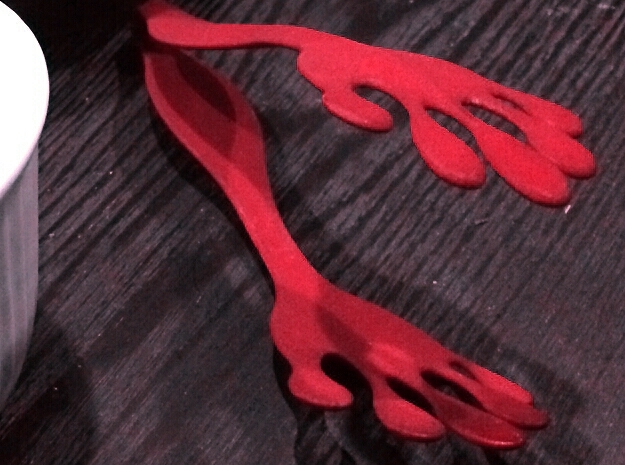
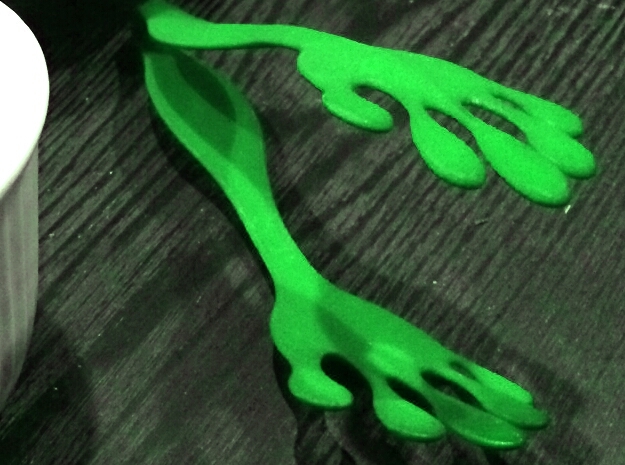
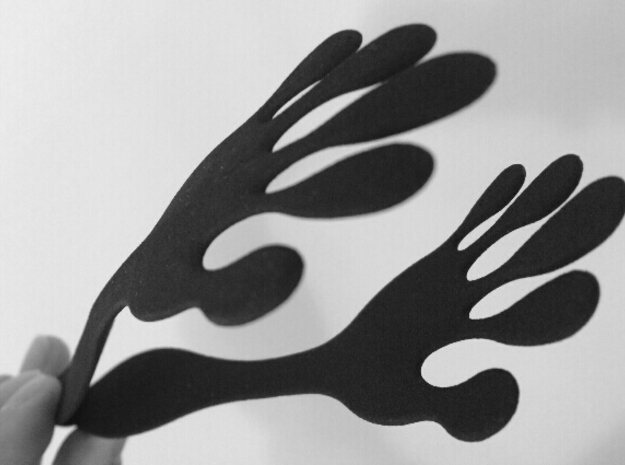
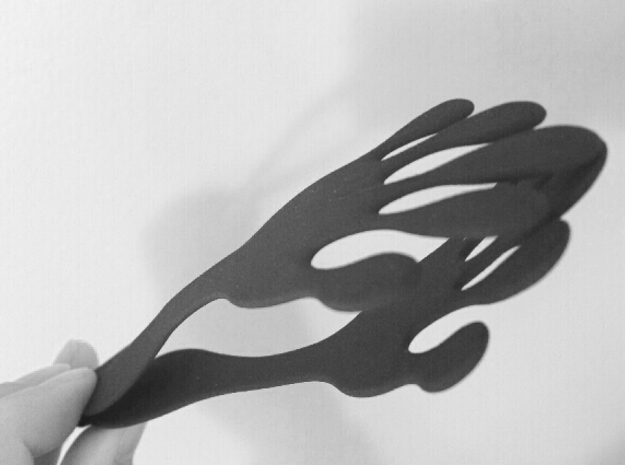
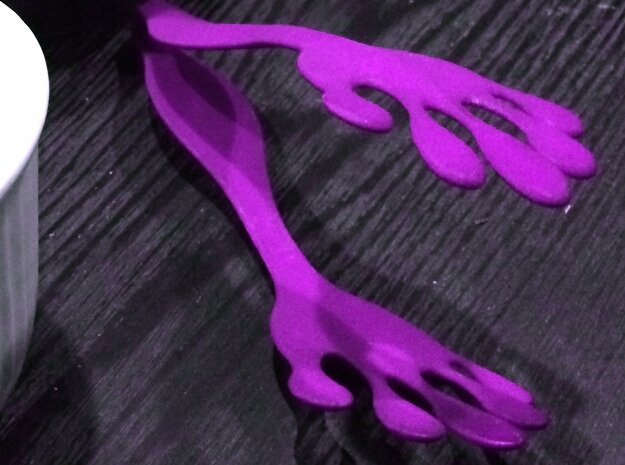
Contato
Prezado cliente, grato pela tua visita.
Se quiser obter mais informações sobre meu trabalho, carreira e trajetória profissional o encourajo a acessar as demais presenças online (ver ícones de mídias sociais no footer).
De outro modo, se tiver interesse nos meus serviços em quaisquer das minhas áreas de especialidades conte comigo para atender as tuas demandas.
Entre em contato e o responderei de pronto. Mais uma vez obrigado pela tua visita e me despeço por hora com as mais respeitosas considerações.
Blog
Prezado cliente,
O blog, assim como o site, estão em permanente manutenção. Por hora, os artigos escritos estão em inglês. No entanto, serão, muito em breve, traduzidos para o português brasileiro.
Destaco ainda que todos os processos do blog estão por ser implementados (comentários, tréplica e tudo o mais).
Grato pela compreensão. Estou trabalhando com afinco, em vista de os melhor servir.
Segue abaixo, portanto, os primeiros, de muitos artigos que estão por vir, segundo as condições supracitadas. Me despeço desejando a todos(as) uma proveitosa leitura.
Hi there!
So here am I in one more terrific, magnificent, awesome, splendid day in my wonderful native motherland of Brazil taking sometime to do something I really also love to do: write about Architecture, Design, Technology and everything related to it. Writing is creation process as well, I think. And I love it. I apologize to be so happy when most of the entire world is suffering so much, mostly due to the ongoing COVID-19 pandemic. But today Luisa, my daughter, is celebrating her 6th turn around our planet.
I’d like to start up this article discussing previously about its goals. It aims, as the title suggests, explain further developments after achieving the MVP (Minimum Viable Product) based upon the bellow-said statements; firstly, analyze the MVP from the standpoint of functionality, ergonomics, employed material and applied sustainable principles; in continuance, chat about the context that resulted in improvements from the MVP and which improvements were done; concluding thoughts, I’ll talk in regard of the strategy used to put the product available for sale to the public in the marketplace.
Before keep going though, important to be said this article has a different approach compared to the first one published about this product, the: Tongs Wanna Hand? - 3D printing Case-study. So I achieved the product MVP. The Wanna Hand? was already designed and prepared to be 3D printed. If you don’t know what I’m talking about, and how I get there, read the aforementioned first article about the Wanna Hand?, please. Thank you very much. On the other hand, if you’ve already read it, let’s move on.
It was in about September of 2014 that I 3D printed the first Wanna Hand? I was simply put A-MA-ZED to have it in my hands and be able to test the product, assessing all the hypothesis in its regard through all time employed digitally designing it. Testing the Wanna Hand? 3D printed, proved all of my hypothesis and I felt incredibly excited about it. There are no words to describe such a moment. I said myself: yes, Yes, and…. YES!!!! And I experienced an incredible sensation of joy, happiness, and satisfaction.
Indeed, as I previously expected, the product was light-weight, resistant to the needed strengths when being used, demonstrated to be easy of usage and, furthermore: eco-efficient, in tune with sustainable values and friendly to the environment given the chosen material,– strong and flexible polished plastic, which has a long life-cycle.
At this point, I was sure the product MVP was achieved. Awesomesauce. Beeeeeeeeautiful, Vitório Paulo. I said proud of myself after the long-term effort developing it, which also made me boost a lot knowledge of new processes of design and digital tool sets never imagined that existed. Welcome to the 4th Industrial Revolution, Vitório Paulo. Now you are part of it, my friend! Woooohooooo!!! LOL.
The product MVP was achieved. Great. Now everyone, its time to talk about the context that resulted improvements in the MVP. As per said in the first case-study article about the Wanna Hand?, the product was developed from 2012 to 2014, in the spare time I had due to be on duty of being a full-time job stay-at-home father of my older daughter Catherine.
Relevant to be said, when speaking in regard of the product, as aforementioned, it relates to the Wanna Hand? MVP. At this point we are in a path to cover the second goal of this article. If in one hand the product was highly influenced by the time I’ve spent taking care of Catherine, further developments relates to Luisa, my second daughter.
Luisa’s pregnancy started around September of 2014, very close to the time I 3D printed the first Wanna Hand?. Luisa’s name was chosen inspired by Jobim’s ( Tom Jobim ) music Luiza. Note that Luisa’s name is with S, of BraSil. Nor Z, as entitled by Jobim in his composition Luiza, neither BraZil, as per said in the United States of America. In USA english, as such.
Luisa’s first name with S was chosen in honor to BraSil, my motherland, once Luisa pursue mixed genes: from Brazil and the States. As such, the chosen Luisa’s name with S, had an intentional purpose. Which, by any chance, is a critic or offense of any kind to the title of one of the most beautiful, full of poetry and inspired music composed by one of the most, if not the most influential and internationally acclaimed Brazilian Popular Musician of all times: Antônio Carlos BRASILEIRO de Almeida Jobim or, simply put, Jobim.
Moving forward on next steps in the development process of the product, note that Jobim, in his
Luiza’s ( hereafter understood as his music ) lyrics, says: “ ...como um brilhante que partindo a
luz explode em sete ( 7 ) cores… “
Keep going, brainstorming improvements of the Wanna Hand?, and evolving the product from its MVP, I’ve decided to adopt seven ( 7 ) colors to the product, though not exactly the seven ( 7 ) colors that Newton ( hereafter known as Isaac Newton ) discovered and documented in his above-said experiment. And I did it on purpose.
I’d broken the rule with the Pink color on purpose, importantly to be said: a tribute to both my already born daughter Catherine and born to be daughter Luisa once, by a convention of the occidental society, consider such color associated to the female sex. If you wanna satisfy your curiosity about what color from Newton's spectrum experiment I'd broken the rule, do your research.
In continuance to the development process, brainstorms didn’t stop at this point. Going ahead playfully mischiefly breaking rules, based on the same iconoclastic, irreverent, creative, original, fashion-forward, out-of-the-box mindset that I’ve achieved the MVP when designing it, I’ve also added in addition the options of black and white to the Wanna Hand?, in order to satisfy the more introverted ones. LOL!
The number of color options nine ( 9 ), relevant to be said, relates to the pregnancy time-frame, from conception to birth. As such, a metaphor to the evolution of the product from its MVP, further developments and delivery. From all brainstorms through the creation process, the Wanna Hand? is a result of a resourceful, thoughtful and research based approach. Nothing was accomplished by chance. Everything had a purpose and intention.
Sure, though, based on the irreverence, boldness and creativity and out-of-the-box mindset that always have been part of my personality - as an Architect: or Designer, or Inventor, or Shaper, or what-else you wanna call me. If you wanna bad mouth me or blackmail me, go ahead. It’s not a problem at all. I truthfully don’t care. I wish you all good luck in life and will pray for you though, folk. And will keep following my life in peace. But please, don’t course Catherine and/or Luisa, and also my mother, and everything will be fine.
Okay, everyone. Now it’s time to talk about the strategy adopted to put the product on sale at the marketplace. At the time I designed the product, achieved the MVP and brainstormed improvements, it was time to release the product for sale. I judged as best strategy to use e-commerce, partnering then with Shapeways: the Global 3D printing cloud-based e-commerce leader platform for Designers, based in New York, USA. I opened then my online store at Shapeways – Vitório Paulo's Shapeways online Store.
It’s time to finish thoughts in regard of this article, once the aims discussed were achieved. If you’d like to take a glance in my online store partnering with Shapeways, where the Tongs Wanna Hand? is for sale, feel free. The link is in the above paragraph, as seen. Also, if you’d like to be in touch, I’ll be equally glad to hear from you.
Best always,
VITÓRIO PAULO :: Brazilian Architect.
1- JOBIM, Tom. Luiza.
*NOTE: The part of the music was written in Brazilian portuguese in order to the original lyrics not be lost in translation.
Hey y’all!
Hope everyone is doing well, despite such tough times we’re going through, with this global pandemic and economic crisis. Better days are to come. Let’s keep up doing our best to be hopeful and strong as such. So here am I once again writing one more article to the blog.
As aims, firstly I’d like to discuss how we can add value to the computer generated images of a product in the previous stage to prototyping and production; secondly, go through the relevance of producing good quality CAD photo-realistic renders; thirdly, talk about how we can achieve well done pics generated through a computer CAD tool set; moreover, as an enthusiast of FOSS (free and open source software), reveals how it can be done with such processes.
So folks, let’s start. Everyone… it just came to my mind right now a colleague of mine from high school that really liked to wear people out, mostly the teachers: if I remember well, there hasn’t been one time that, whenever the teachers attempting to engage the class asking them about the content, something like – “How we can explain this? Anyone knows?” - he always answered back –
“Oh, Yeah… you are right… how we can explain this, teacher?” Making half of the class lol and half be pissed. I don’t need to say which half of the class were always pissed - the truthfully engaged ones, while the other half was, obviously, the “serious” ones (which also doesn’t mean lack of engagement). And, of course, I won’t reveal what side of the class I always was (lol). I’ll allow you to use imagination to take a guess. I really liked this guy. He was really a pain whenever he wanted, though was indeed a cool dude.
At this point, y’all must be asking why I told the above-said event from my teenage-hood - ?. It didn’t mean at all peers, that I forgot about the aims of the article. It happened that I was just reviewing the aforementioned paragraph while writing and when I went through it, the part of the sentence “… how we can value the presentation …” made me remember this episode. I really don’t know why I had this flashback, it just came to my mind suddenly. Anyway, let’s keep moving forward.
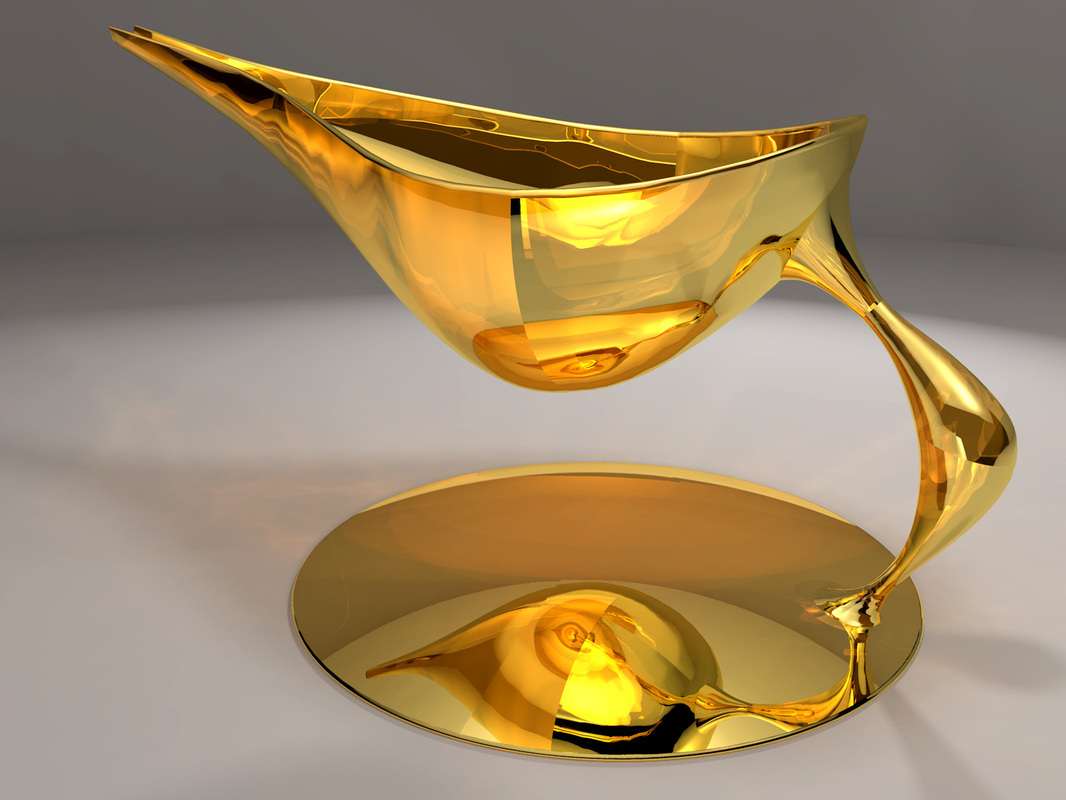
In regard of the first aim, there are aspects that need to be taken into consideration. The first one to be considered is: what your render software provides in regard of features? I won’t discuss in depth this matter, ‘cause this isn’t one of the goals to be addressed. But in general lines, I would say: what is the render engine of the software? Ray-tracing? Global Illumination? What else?
Does it contemplate simulation of physically accurate lights and materials? Does the engine simulate glasses, water, reflections, has UV map capabilities and so on? As we can see, first of all we need to understand the theory behind the scenes of rendering processes to be able to choose and use properly a CAD render package and its features, before even start “clicking buttons” in its GUI (Graphic User Interface).
Awesome. Let’s keep going. Once we understand the theory, and the CAD render software is chosen, it’s time to put the theory into practice. Albeit, as an advice, read its manual first people, and go through some tutorials prior to get excited to start “clicking buttons”. It will save you plenty of time when jumping into experimenting the software. Here, I’m using as a case-study, a product designed in 2014: a tableware, a gravy-boat.
As y’all can see, taking a glance in the pics, there are many possibilities provided by the Render package I used in order to add value to the renders.The Render software adopted has powerful capabilities: its engine provides features such as: global illumination, scene set up, simulates colored glass (as well as a wide range of materials) and, if it’s not enough, also simulates reflections, translucency, accurate lights, smooth shadow effects and much more.
Everything above-stated in the last paragraph is relevant, indeed. Notwithstanding, it’s also important to consider that images with different standpoints of the product are welcomed as well: it allows the targeted audience to better understand the object as a whole. This matter doesn’t ends up here though. It’s also interesting to be said that the points of view selected prior to render the images need to be carefully chosen. With this in mind, as a result, the generated images will have a perspective effect with strong appeal, which is desirable, in order to delight the clientele.
Moving further, once the renders are done, it’s also desirable to give it a final touch. At this point, I’m speaking here about post-processing image processes. With a proper tool set, the possibilities of improving the quality of the images are endless. I won’t jump in details into this issue, once it isn’t among the goals of this article. But in order to don’t get y’all frustrated I’ll give a couple of examples: decrease or increase brightness or contrast, colors and saturation, and much more. I’ll let the matter open for y’all to do your job researching about it. At this point, everyone might be asking me? But why Vitorio, develop post-processing of the images is important? Simple everyone… ,- In order to make the images even more appealing to the patronage. That’s all. Make sense? Awesomesauce.
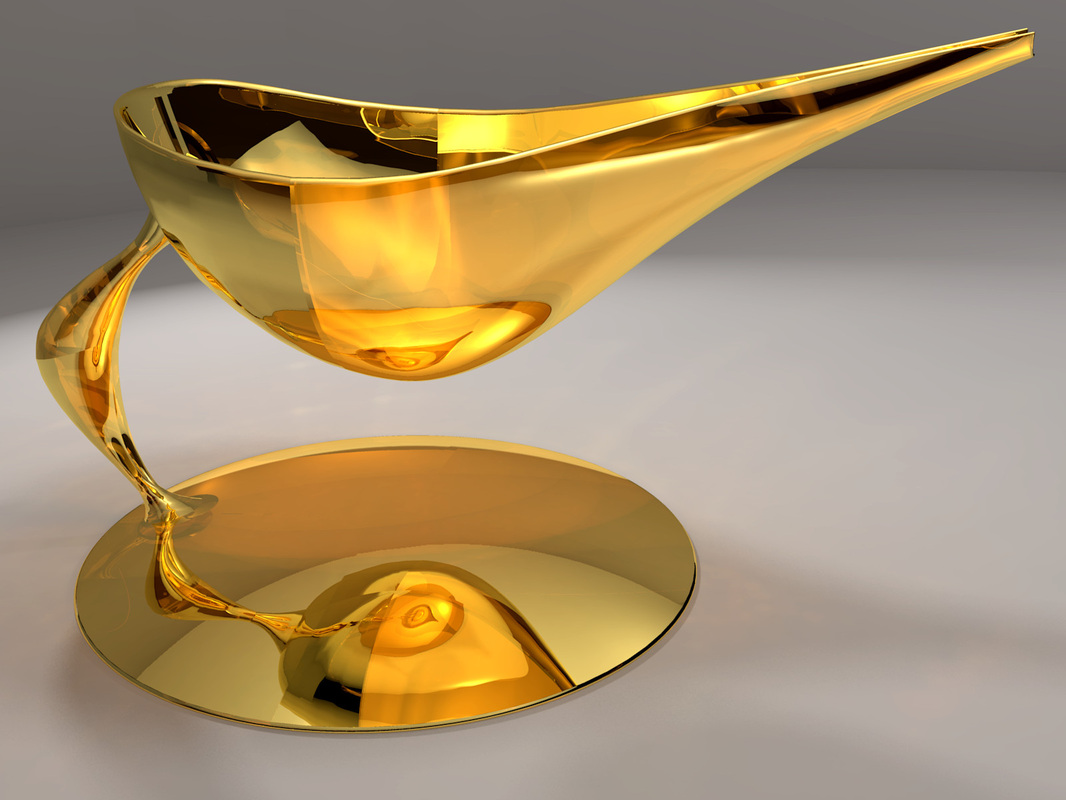
Now I’d like to chat a bit about the FOSS tool set that I’ve used when generating and working in the post-production of the images. Yes, I’m opening the “pandora box” here, related to part of my design workflow. Peers, that are many free and open source options out there that are cross-platform (works in Linux, Mac and Windows OSs) that can make the job done.
It’s just a matter of transitioning to such tools and save your so hard earned money on purchasing proprietary software that “breaks the bank”. Mostly for small business and sole practitioners. Simply put! The investment on using such packages is only time spent to learn it! Do web and video searches, read the manuals, go through online tutorials, the possibilities to learn a FOSS software are endless!
Now I am going to go satisfy your curiosity: for rendering the object I used Kerkythea and, for post-processing the images, I used Gimp. Krita could be an option as well, but I prefer to use Gimp. Feel free though, to try both and decide which of those you feel more comfortable to use, or not. It’s up to you. Nonetheless, there’s nothin’ more valuable in this world than freedom of choice.
Ending the essay, I really hope I was helpful and had achieved the aims of the article. Btw, the Gravy-boat was designed to be produced with the technique of blown colored glass. The project dates from 2014, and was developed for two years in the spare time I had while being a 24/7 stay at home daddy of my older daughter Catherine DaSilva and adoptive father of my ex-dog Parker DaSilva that, unfortunately, had already passed away. I’ve already saved in my heart the great moments we’ve shared together.
If anyone is wiling to join forces to craft this product, don’t hesitate to be in touch. Nonetheless, strong together: always.
Sweet!
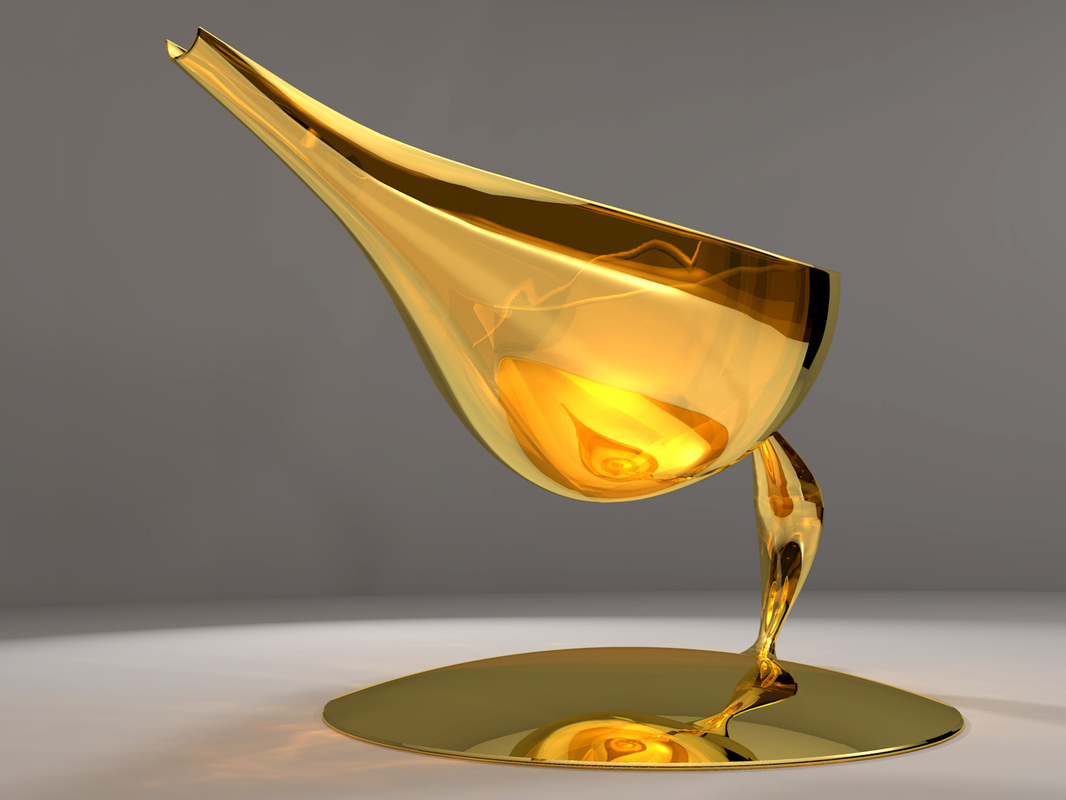
Hi there,
So here am I in one more beautiful, shinny and warm summer day in my native town of São Salvador da Bahia, Brazil taking some time to write, while in confinement due to this pandemic. But let’s keep strong and hopeful, and thinking positive: better times are to come.
I’d like to start up speaking in regard of my goals with this case-study. Mostly, I’d like to discuss how thoughts drive design. Yep! Exactly! Architects, Designers, Inventors, Students, Hobbysts, whatever, have y’all already thought about the path that drives the Design process? Indeed, I really believe that there’s not such a rule, though I’d like to explain a bit of my design process.
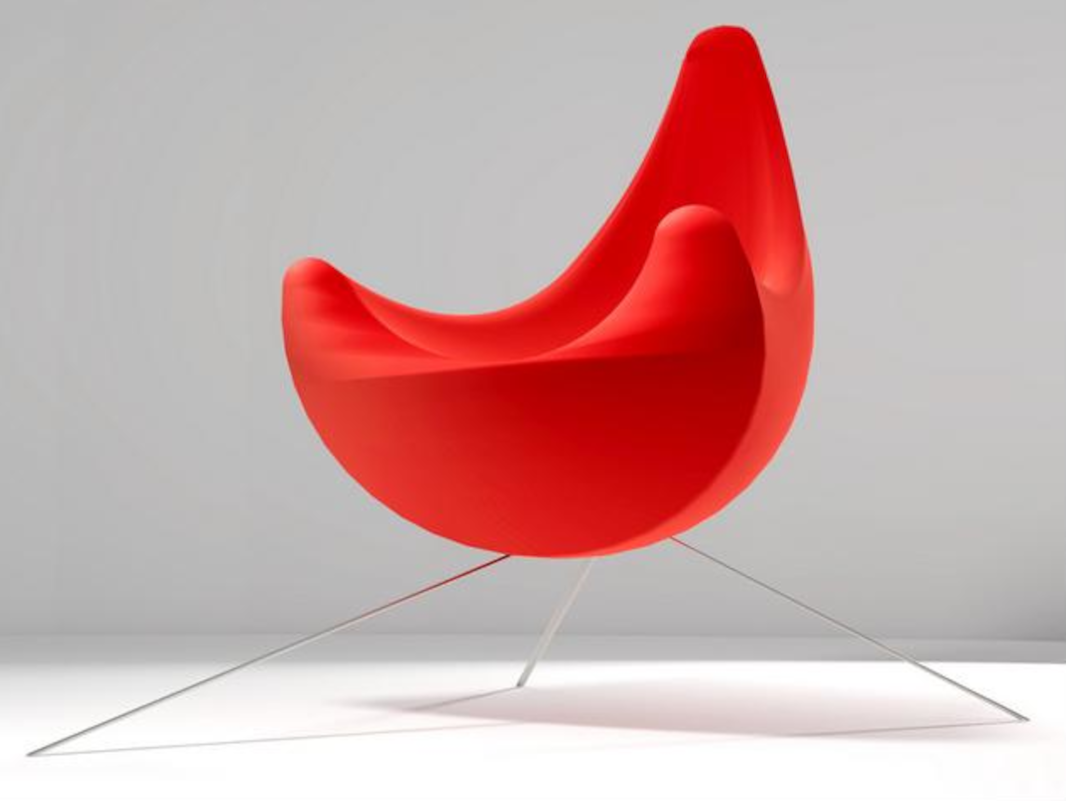
In this way of thinking, firstly I establish WHAT I ‘m looking forward to Design and WHY? As such, I think something like that: “Hmmm… I’d like to Design a Chaise…” Or, the concept comes first and the object, after: something like “Hmm… I wanna do a Tribute to Rio de Janeiro, Brazil”. Then, I already have the object and the concept in mind. Awesomesauce! The design process have already began.
The next step in the creation process is to brainstorm about HOW an homage to Rio could be done. The inspirations are endless! Rio (as well as all of Brazil is extremely rich at the standpoint of its culture, history, all kind of arts, as well as the easy-going style of the people, the landscapes, nature, and much more). As such, I can do anything, as soon as the design portraits and is loyal to the concept. I can also say that the Design can be almost thematic or not. I’m the designer, as such, it’s up to me. Simple like that. And, repeating, most importantly, in my standpoint, is if the concept can be perceived in the product.
Okay, let’s keep moving then! I have the concept, and I know the product that I wanna design. Beautiful! Next step: after brainstorming, I have already many preliminary ideas in mind of how the concept can be translated into a design.
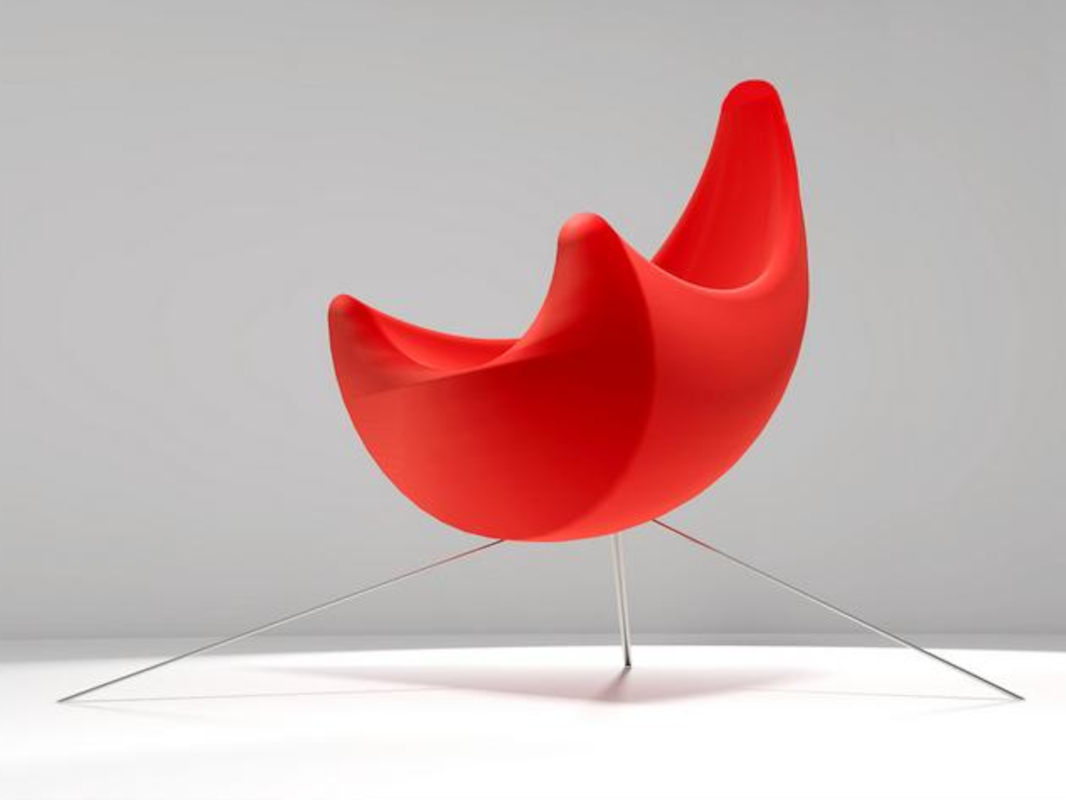
Going further, it’s supercool that I already have matured the concept, mostly in regard of its shape. But design is not only form. It needs to necessarily be functional, industrial viable, aesthetic pleasant and, thereafter: brings joy, amusement, happiness to the end user and have a strong concept.
Amazing. Let’s keep moving, folks. After researching a lot about Rio, and with the experience that I have, as someone who has lived there for almost three years, I realized that nothing speaks so loudly than the nature. Mostly, the bold curves of the mountains, establishing presence everywhere and, with all poetry, surrounding the Guanabara bay.
Guanabara! Yep! Chaise Guanabara, I said myself! Perfect! Well done Vitório, I’ve said myself. Great name for the produt, I thought. What comes next, buddy? Thinkink myself loudly. It’s time to bring to paper the ideas of the product that comes in my mind. So I go, thinking with the pen and paper, sketching in order to get a first material approach of what only existed in the wonderful world of the abstraction and senses.
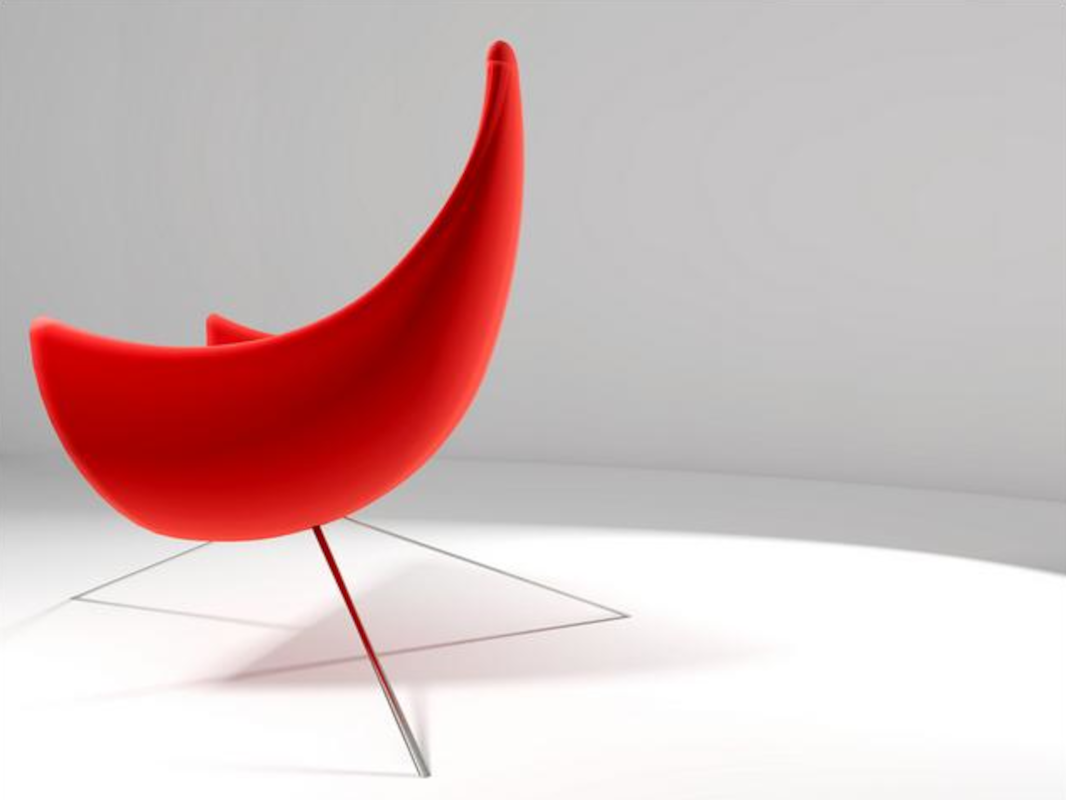
After all Isometrics, perspectives and views sketched in scale with pen and paper, it’s time to refine the idea and document it for production: with the computer and gadgets, making usage of a set of CADD and graphic tools that composes my workflow.
Important, peers! You need also to think about how the product will be crafted (it needs to have industrial viability, remember?). The Chaise Guanabara was thought to be produced in stainlees still structure, injectable foam in a mold (seat) and the seat finished in stretch cloth (though firstly thought to be in velvet).
The Guanabara Chaise hasn’t been already prototyped or even have gone into mass production. As such, if anyone wants to join forces and keep developing the product with me, let’s catch up! Nonetheless, stronger together, always.
Hope y’all enjoyed this article and feel free to be in touch. Looking forward to hear from you.
Sweet!

Hi everyone,
So here am I writing one more of many for the future being essays. Very recently ArchDaily published an article entitled 121 definitions of Architecture. Statements made by many Architects and Architectural critics from worldwide nations:
At the very beginning of this post, it’s important to clarify that the aim here is not at all dive in deep into the matter. Indeed Architecture, as a complex and multidisciplinary field of knowledge, would allow thesis and thesis to be written in regard of the theme. In this standpoint, the goal of the essay is to promote an introductory discussion about it, opening space for further discussions.
Firstly, it would be tough, even not viable at all to discuss each and all of the 121 statements posted on the recent ArchDaily article. I’ve selected as such some of them to start thoughts. Important at this point to tell that the selected statements does not privilege any Architect or Architectural critic or historicist from any nation and/or historic period, in respect to worldwide cultures and way of thinking.
The first one that brought my attention was a statement made by Brazilian Architect Oscar Niemeyer: “Architecture is Invention” (In Newsweek). Immediately I thought: yes, I have to agree with him. It has all to do and honors the creativity and problem-solving nature of our craft. But wouldn’t other fields of knowledge, mostly related to design processes (e.g. product design, fashion design, furniture design, whatsoever design) also be invention?
Well, in my thoughts, yes. Definitely. And mostly important, everything related to design processes, doesn’t matter the genre, is Architecture as well. Not by chance, just as an example, Niemeyer designed furniture too. Swiss/French Architect Le Corbusier’s activities related to Niemeyer stated concept of “Architecture as Invention” surpassed the common sense of Architecture as the field of knowledge responsible for the conception and delivery of facilities, in all of its known design stages.
Le Corbusier was not only an Architect, but acted in many other design related disciplines: furniture design, fine artistry, and so on. An Architect (Inventor), as Niemeyer’s definition that can be totally described, in the most higher degree of what an Architect is supposed to be. As well as Niemeyer. And importantly to be phrased here, there is no such space to compare who was better than the other and why. Geniuses are not supposed to be compared, but equally respected for their practice and legacy, as well as about what can we learn from them. Both were giants in the field and, not by chance, had written their names in history.
So let’s keep moving forward. Not attempting to be partial here regardless of nationality, but couldn’t help on considering the Architecture’s definition from French Architect Jean Nouvel: “Its the petrification of a cultural moment.” (In Newsweek). I thought it was extremely interesting Nouvel’s point of view, mostly because it brought me a memory from the time I was enrolled in the Bachelors` of Architecture and Urban Planning of the Federal University of Bahia, in my native Salvador da Bahia / Brazil, where I’ve graduated.
In a discipline entitled (if my memory doesn’t fail) “Introduction to Architecture”, the Professor asked us to define Architecture. When I judged it was appropriated to express my thoughts, with elegance, I’ve said: “It’s the expression of human kind in its historical period”. The Professor then answered me back: “It’s a very interesting statement Vitório, but wouldn’t such concept be equally applied to other fields of knowledge? Fine Arts, Philosophy, Literature, and so on?” At what I’ve answered: “Indeed it would. But it’s also truthful regarding Architecture.” A silence followed the class. After a minute or so, the Professor restarted the Lecture. Decades after this episode, here am I, noticing that my point of view is tuned with Nouvel’s thoughts on defining Architecture. It’s not only a suitable definition for Architecture, but thoughtful as well.
One definition of Architecture that really amused me was the one from American Architecture Critic and Writer Ada Louise Huxtable: “Architecture is a form-maker, problem-solver and environment-creator, and the international exposition is its laboratory.” (In New York Times). Such definition in my standpoint is extremely resourceful, thoughtful, original and full of poetry. And honors her legacy, in my opinion, as one of the most important Architecture critics of her generation.
Indeed, Ms. Huxtable definition of Architecture talks about definitely important concepts of Architecture as the field of knowledge responsible for the ideation of the built environment. Architects are form-makers: their liable for shaping facilities, that’s true. As soon as each building has its unique specificities, it’s in the responsibility of the Architect to problem-solve and create environments suitable to its demands. Thereafter, Architecture is a global practice and all of the world’s geometrical physical space can be understood as its laboratory. Period.
The thoughts following Ms. Huxtable statement narrated in the last paragraph is in tune with Iraqi/British Architect Zaha Hadid definition of Architecture: “Architecture is unnecessary difficult. It’s very tough.” (In The Guardian). I have to agree with Ms. Hadid: yes, architecture is really tough, and difficult. It’s intellectually challenging and, in my perspective, that’s exactly something about Architecture that makes it so fascinating. I'm at the same page of Ms. Hadid, as well as Ms. Huxtable.
There are so many factors to be considered in the ideation of a facility that makes it a really tough craft. In this context, it’s really hard for the initial concept not to be lost. And not by chance, American Architects Charles & Ray Eames once stated: “We’d rather design furniture instead of practicing Architecture, once there are much less factors to interfere with the original concept.” Which doesn’t mean at all that the Eames weren’t extremely talented, brilliant and gifted in the field of Architecture, Fine artistry, Sculpture, Product Design and many other crafts related to creation processes.
Now it’s time to finish thoughts in regard of this brief essay, that targeted a brief introduction to the definition of Architecture. Firstly, I’d recommend everyone to read the published ArchDaily article (see link in first paragraph). And secondly, I’d be glad to be in touch with everyone. Don’t hesitate to reaching me out.
Best regards!
Hello, everyone!
It’s almost Christmas and I’m taking some time of this splendid sunny and beautiful day here in my native Salvador (Bahia/Brasil) to write to y`all about the Tongs Wanna Hand? I think it’s important to emphasize what are the goals with this post. Let’s start as such. Firstly, I’d like to talk in regard of the workflow I’ve used, from conception to production of the product. Secondly, I’d like to express my opinion in regard of the softwares used in the workflow. And thirdly, speak about the period the product was developed and how I’ve got inspired to develop it.
Back to 2010, I was looking forward to add to my workflow new processes of Computer Aided Design (CAD), mostly concerning 3D modeling and it’s possibilities of integration with contemporary Computer Aided Manufacturing (CAM). I already was aware that the Design industry as a whole was adopting SketchUp for 3D modeling purposes. After conducting independent research and studying about the theory behind the scenes of the software, I decided to give it a chance, using the, at the time, free version Sketchup Make. After playing around with the software I ended up quite surprised with its user friendly interface and the low learning curve to start effectively using it in a production setting, as promised by the software-house (Google at that time, if doesn't fail my memory, now undergoing development by Trimble).
Reviews and testimonials though, confirmed my experience with the software: without add-ons (plug-ins), the SkecthUp was limited regarding the possibility of reproducing geometries with higher levels of complexity. As such, my next steps diving in depth regarding experiencing the software was all about learning and exploring the potential of plug-ins. My experience couldn’t be better: the usage of add-ons added an incredible value to the workflow. Going further, it allowed me to develop the product (Wanna a Hand?), which geometry is complex and made even friends of mine from the industry getting surprised that I was able to design it inside SketchUp.
The design of the product though had its kick-off back to 2013, one year after my daughter Catherine was born and I’ve put my career in standby to be a full-time, 24/7 stay at home daddy: a priceless period of my life, a couple of years that changed my life substantially to better. It’s quite interesting to realize how the experiences we live, mostly if we’re in an industry that push us to think out-of-the-box, such as the Design (doesn’t really mattering the genre), translates in our production.
At that time Catherine was under my care (for about 3 years), it took me about two years developing the product in my rare free hours. Catherine and I was used to play a lot. I remember how Catherine was so passionate about Lego and the possibilities of emulating structures with it. Also, she always had an eye for colors and how she could make the structures in lego look even more playful. She loved to see cartoons as well, though I always had the care to do not allow her to be all day long in front of the TV.
The delay in developing the product, that toke me about 2 years, is justified as such for my main occupation at that time as a full-time job father raising my little one. As soon as she went to bed at night, I was used to go to the computer for a couple of hours to keep developing the Wanna a Hand?. At this point, here is interesting to make the link between this period I’ve lived and the design of the product itself: playful, childish like, irreverent, creative and out-of-the-box. If it’s not enough, a multi-purpose, “total flex” product: as a Tong (occidental standpoint), it can be used to pick-up salads; on the other hand, it can be totally understood as the reinvention of the Hashi (oriental perspective).
Once the product was designed in SkecthUp Make, it needed to be in compliance with the guidelines of the 3D printer bureau of services: manifold (meshes totally closed, water tight, without holes), as known in the 3D printing industry. In order to prepare the product to be 3D printed, I made the final review of it using the program MeshLab, which is a very nice piece of software to debug, fix and improve products that own compĺex meshes geometry.
Btw, still speaking in regard of the design process, my most sincere congrats to the staff of devs behind Kerkythea. A powerful and user friendly rendering package that can be easily integrated into the SketchUp workflow. Gimp, an outstanding photo-editing program, was also used to deliver a final touch on the Kerkythea generated rendering images.
Supercool everyone! Job done! It was time now to just upload the 3D model as a .stl file to get it 3D printed. In the market place, I’ve choose to work with the global leader New York based 3D printing bureau of service Shapeways, and opened my online store with them: Vitório Paulo's Shapeways online Store
Hope y`all liked the post and do not hesitate to be in touch for further information. If interested in purchasing the Wanna a Hand? as well, it would be simply put - awesomesauce! I say bye for now wishing everyone a blessed Christmas holiday with the hearts full of love and a terrific New Years eve. Let’s send our positive vibrations to the universe in order to make 2020 The Year!
Cheers!
Hey'all,
So here am I updating a post from late 2014. I am doing so in an attempt to explain the importance to talk about the idea toward the conception of a product. As such, I will use as a case-study the Berimbau Chaise: a furniture I designed that dates back from 2002. It's important though, to discuss principles of the Design process to understand what is my goal with this post.

So let's keep moving forward. In order to make a product marketable, I believe it's relevant to tell a story about it, and further in this post, I will dive in deep in regard of my thoughts into the matter. Nonetheless, speaking about the Design of a product, such concerns needs to be taken into consideration:
* What is the concept?
* How did you come out with the idea?
* What are the influences that guided the development of the product?
* What is the intention behind its creation?
* What is the profile of the patrons targeted to purchase the product? Is it a product to be sold in small quantities with a high price and mark-up or is it a product to be fabricated in industrial scale and sold at affordable prices at a lower mark-up in order to profit with its scalable distribution?
* What will be the distribution channel(s) of the product once released in the marketplace? And when and where the product is planned to be released to the end-user?
* What will be the strategy(ies) to advertise the product in the market(s) of the targeted audience?
* Mostly important: if the product is industrially viable, aesthetically pleasant, functional, eco-efficient and establish a strong emotional connection with the end-user, then there is a last matter to be taken into consideration: Is it being released in a moment in human history that the targeted audience is prepared to purchase and use it? Indeed, there are many factors behind the success or failure of a product, right? Bingo! You've got it.
At this point, you might ask me: What the heck are you talking about Vitório Paulo? It's not rocket science my friend, not at all! Let make myself understood: as an example, Leonardo Da Vinci, a man hundreds, hundreds and hundreds of centuries ahead of his time ideate products (e.g. military devices) that could be crafted at the period he lived. There were available technologies at the time to build its designs. There were also demands to built such artifacts.
On the other hand, Mr. Da Vinci designed products that were only able to be crafted many centuries ahead of his time! Some of them only in the 20th century! Examples? The Helicopter... the Parachute.. and many, many others that couldn't be built in his time in history due to lack of technology.
As such, put simply, taking Mr. Da Vinci as an example, if there's not available technology at a period in history to manufacture a Design, then the product is not viable: it won't get out of the paper, nor from the screen. On the other hand, if the demands of a society (mostly concerning behaviors and life style) is not evolved enough for avant-gard, ahead of its time products (and I'm here speaking about societies that evolves with time in an industrial technological fashion), then the product is equally susceptible to failure.
Okay, now we are almost there. If all the aforementioned principles that involve the ideation, planning, development and delivery of a product is met, then here I come with the importance to link to the product a story about it. At this point you might ask me: but why my dearest Vitório Paulo?
The answer for this inquire is very simple: because in this moment in history, earlier 21th century, the end-user does not want ONLY to use a product. Does not want ONLY a product that function and do "the job". In this historic moment, patrons are looking forward to have joy, pleasure, well being whenever using a product. And that's exactly why the consumer decides between a product that pleases him (her) more than competitive others available in the marketplace.
Finishing thoughts, the end-user wants to purchase and use a product that will bring happiness, satisfaction to him (her). And telling a story behind your product my friend you will, as a Designer, not only aggregate value to it, but mostly important, differentiate your brand from the crowd and strengthen it. Simple like that.
As an example, here's showcased the story I've written (Sinopsys) about a product I've designed in 2002, the Berimbau Chaise. I was around my middle 20's at that time. The furniture was selected among few pieces from all over my native continentaly huge Brazil to be at the final of the Movelpar Design Awards 2nd Ed. (professional category), which was held in Parana-Brazil, 2015.
At that time, first decade of the 20th century, I've managed the production, marketing and sales of this and other conceptual furniture. My goal was to sale such products in small quantities: unique or almost unique pieces. With high price and mark-up to make the business model profitable, honor the higher content of authorship and strengthen my brand.
Btw, as I did with the Berimbau Chaise, I've written stories for all other conceptual furniture I've designed as well. I'll post them in the future, no worries. I beg my pardon to have not yet translated the Sinopsys into english, but my intention was to be loyal (at least for now) to the original version in Brazilian Portuguese, in order to do not have its essence lost into translations.
Hope you've enjoyed this post and you are more then welcome to be in touch. I'll be glad to hear back your thoughts and chat with you in regard of those ideas.
Regards from my motherland Brazil.
" Rucungo, Urucungo ou ainda Orocongo. Assim é conhecido o Berimbau em todo o continente africano. Instrumento de um toque singular, cruza o Oceano Atlântico através dos navios negreiros, aportando no Brasil colônia junto com os antigos escravos.
O Berimbau manifesta e revela-se nas tradicionais rodas de Capoeira, demonstrando para os povos das diversas regiões do país e do mundo traços marcantes da plural e diversa cultura brasileira.
O Berimbau, através de sua riqueza tímbrica e sonora, celebra o swingue, a ginga, a dança e alegria “... deste Brasil que canta e é feliz, feliz…”*1 na mais autêntica brasilidade; reflete “...um pouquinho de Brasil iá, iá... um pouco de uma raça que não tem medo de fumaça e não se entrega não…”*1;
e consagra-se no universo da criação literária e da composição musical a partir dos versos de Vinícius de Moraes que, embalados ao som do violão de Baden Powell fizeram história – “...capoeira que é bom não cai, mas se um dia ele cai, cai bem. Capoeira me mandou dizer que já chegou, chegou para ficar. Berimbau me confirmou, vai ter briga de amor, tristeza camará.”*2.
A Chaise Berimbau*3, inspirada no instrumento homônimo, soluciona com eficiência e plasticidade as questões do design, com caráter genuinamente brasileiro. O móvel - concebido para um público alvo de fino bom gosto, erudição e sensibilidade plástica, que admira o Brasil e sua gente, sua história e cultura – aplica-se a ambientação e décor de salas de estar e terraços, varandas e livings.
A Chaise Berimbau, homenagem do Arquiteto a “São Salvador da Bahia” - sua terra natal - destina-se a todos que desejam ter um pouquinho da “Bahia de Todos os Santos” em seus lares e corações.
1- BARROSO, Ary. Isto Aqui, o que é.
2- DE MORAES, Vinícius. Berimbau.
3- PAULO, Vitório. Chaise Berimbau. 2002.
*NOTE: This is my original writing in Brazilian Portuguese, dating from 2002. The translation to english will be available soon.